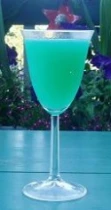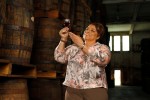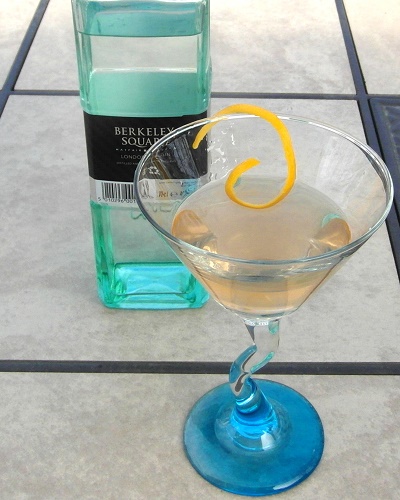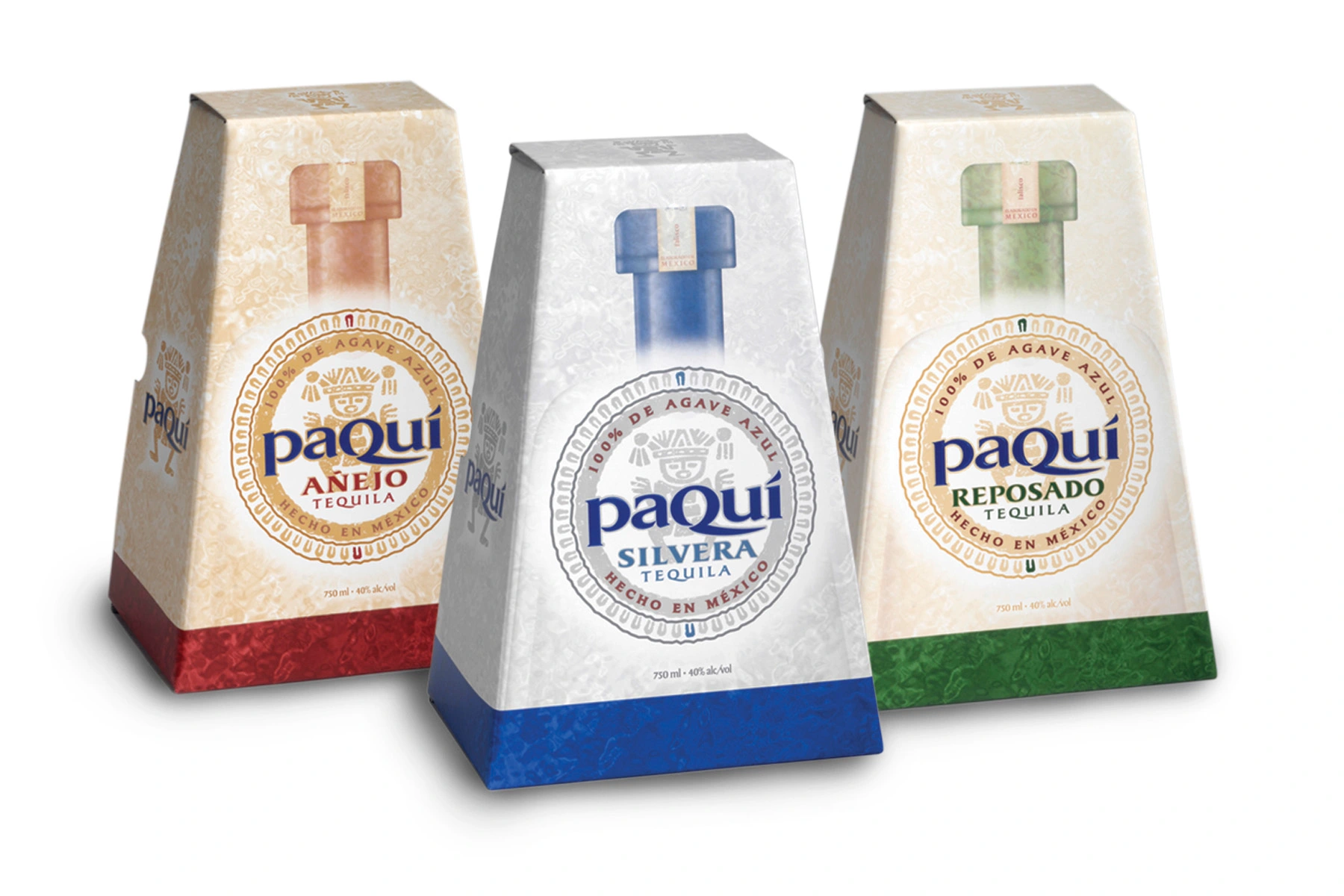Caribou Crossing Single Barrel Canadian Whisky
Review: Caribou Crossing Single Barrel Canadian Whisky 93/100
Review by Chip Dykstra (Aka Arctic Wolf)
Revised on September 23, 2018
According to the Sazerac website, their company is a direct result of the famous cocktail which bears the same name. It began in 1938 when Antoine Peychaud created a special drink for his guests to enjoy in the evenings at his apothecary in the French Quarter’s Royal Street. He would mix brandy, absinthe and a dash of his secret bitters for his guests. This special drink became quite popular and began to appear in the various coffee house’ establishments in New Orleans. One such establishment, the Sazerac Coffee House became so popular serving their version of the drink (made with Sazerac de Forge et Fils Brandy) that it became known as the Sazerac Cocktail.
In 1869, Thomas H. Handy purchased the Sazerac Coffeehouse, and by the 1890′s the coffee-house and its growing business interests had become chartered as the Sazerac Company. Although, the company is based in New Orleans, its holdings include many of North America’s most popular distilling companies, the Buffalo Trace Distillery, A. Smith Bowman, the Glenmore Distillery, and more.
Canadian whisky by volume is the best-selling whisky in North America. Despite the spirit’s obvious popularity, the perception of this class of whisky (among many spirits writers and whisky critics) is that the Canadian spirit was in the past thin and uninteresting. The landscape however, appears to be changing rapidly, especially at the premium end of the whisky market, where the Canadian spirit has seen strong growth in market share. Recognizing this trend, the Sazerac Company has recently made a push towards the premium end of the Canadian Whisky market with many new brands put forward over the past several years. Caribou Crossing is one such premium brand.
Caribou Crossing is what is known as a Single Barrel Whisky. From the company’s inventory of over 200,000 barrels of Canadian whisky, Sazerac’s whisky making team selects what they deem to be some of the very finest barrels. Each of these chosen barrels is bottled individually capturing its unique flavour. This means that each individual barrel offers a unique taste experience for the Canadian whisky connoisseur.
Although, the Sazerac Company is based in New Orleans, its holdings include many of North America’s most popular distilling companies, the Buffalo Trace Distillery, A. Smith Bowman, the Glenmore Distillery, and more.
 In the Bottle 5/5
In the Bottle 5/5
The Caribou Crossing Single Barrel Whisky arrives in a beautiful blue display box with a stunning picture of the northern caribou in front of the shimmering aurora borealis. Inside the box is a blue cloth bag which contains a masculine four-sided glass decanter, sealed with a cork closure featuring a pewter maple leaf topper and blue sealing wax. A fantastic presentation which is sure to wow the dinner guests.
In the Glass 9/10
The whisky displays itself in the glass with a rich golden amber colour. When I tilt my glencairn glass and give it a slow swirl, I see droopy droplets forming at the crest of the whisky which drop slow-moving slender legs down the insides of my glass. The initial aroma from the glass is a nice mixture of oak and rye spices melded nicely into butterscotch and honeycomb.
This is a whisky which grows a little in the glass as you let it breathe. The oak and the rye grain seem to gain strength as sawdust and rye husks fill the breezes above the glass with very nice accents of vanilla and baking spice. Fresh corn on the cob rises into those breezes; and impressions of butterscotch pudding and vanilla ice cream tempt me into taking my first sip.
In the Mouth 56/60
The whisky begins with a somewhat soft lightly buttered mouth-feel. The initial flavour reminds me of freshly cut planks of oak and cedar with rye grain and rye spice quickly building alongside. Flavours of dank corn whiskey weave in and out of the cedar and oak, and the rye spices are joined by orange peel and hints of fresh citrus lime. The strong oak and rye flavours are tempered somewhat by a mild but firm butterscotch and vanilla presence. Some honeycomb adds a touch more sweetness and the overall result is a very interesting (and a very good) sipping whisky.
I allowed the whisky to breathe and was rewarded when my second sip revealed that the flavours had melded nicely together. It was now difficult to pick out individual flavours, rather the best description would be a lush oak and rye syrup which was truly beguiling.
In the Throat 13.5/15
The lightly buttered mouth-feel gives the Caribou Crossing a little length in the exit featuring flavours of oak, corn and butterscotch which trail down the throat. After the whisky is swallowed, sweet honeycomb lingers on the palate and the glowing embers of disappearing rye spices leave their imprint.
The Afterburn 9.5/10
I really enjoyed the Caribou Crossing Single Barrel Canadian Whisky. It tastes unique, featuring flavourful elements of corn whiskey within the Canadian Whisky taste profile. The oak presence is stronger than a traditional Canadian Whisky would be; but then again, this isn’t your traditional Canadian Whisky. It is a Single Barrel whisky, and as such, I feel the barrels influence should be firmly felt. I understand that Sazerac plans to make a splash in the Premium Canadian Whisky category, I think they already have!
__________________________________________________________________________________________________________________________________________________________________________________________________________________________________________________________
Suggested Recipe
 The Canadian Rye Sazerac
The Canadian Rye Sazerac
2 oz Caribou Crossing Single Barrel Canadian Whisky
3/4 tsp sugar
Two dashes bitters (Peychaud’s)
Lemon Peel
a dash of absinthe (sub Green Chartreuse)
Chill an old-fashioned glass by filling it with ice.
In another glass muddle the sugar and Peychaud’s bitters
Add the Rye Whiskey and stir
Now empty the old-fashioned glass of its ice (It should be well chilled)
Rinse the inside of the chilled old-fashioned glass with absinthe expelling any excess.
Empty the rye-sugar-bitters mixture into the chilled old-fashioned glass
squeeze the lemon peel over the cocktail
If desired, garnish with the remainder of the lemon peel
Enjoy Responsibly!
__________________________________________________________________________________________________________________________________________________________________________________________________________________________________________________________
As always you may interpret the scores I provide as follows.
0-25 A spirit with a rating this low would actually kill you.
26-49 Depending upon your fortitude you might actually survive this.
50 -59 You are safe to drink this…but you shouldn’t.
60-69 Substandard swill which you may offer to people you do not want to see again.
70-74 Now we have a fair mixing rum or whisky. Accept this but make sure it is mixed into a cocktail.
75-79 You may begin to serve this to friends, again probably still cocktail territory.
80-84 We begin to enjoy this spirit neat or on the rocks. (I will still primarily mix cocktails)
85-89 Excellent for sipping or for mixing!
90-94 Definitely a primary sipping spirit, in fact you may want to hoard this for yourself.
95-97.5 The Cream of the Crop
98+ I haven’t met this bottle yet…but I want to.
Very loosely we may put my scores into terms that you may be more familiar with on a Gold, Silver, and Bronze medal scale as follows:
70 – 79.5 Bronze Medal (Recommended only as a mixer)
80 – 89.5 Silver Medal (Recommended for sipping and or a high quality mixer)
90 – 95 Gold Medal (Highly recommended for sipping and for sublime cocktails.)
95.5+ Platinum Award (Highest Recommendation)








portwood said
If this were bottled by the CANADIAN producer they would have a hard time selling it for $40.
Ship the juice to the US, water it down to the bare minimum 40%, put it in fancy packaging, ship it back to Canada, mark it up further with crazy taxes, and voila an $85 bottle of “premium” whisky. We Canadians are a gullible bunch.
portwood
Arctic Wolf said
I think it is more of a case of Canadian companies underselling their own whisky excellence. We continue to sell great whiskies in very mediocre bottles. Bottom shelf presentation usually equates to bottom shelf pricing even if the whisky inside is great (That’s why I was able to score some Alberta premium 25 year old for less than 30 bucks last year.)
John Hall though, is showing Canadian distillers another way. His Premium whiskies are all about 10 years old and they sell for 70 bucks. Great packaging, and consistently good quality help thes ‘premium’ whiskies sell out every year.
portwood said
The Forty Creek products are indeed good quality. However, I don’t buy the “about 10 years” old line. Unless an age statement is printed on the label its all speculation. If the youngest whisky was indeed “about 10 years” I bet John Hall would mature it the extra few weeks and print “10yo” on the label.
Given that young rye packs a punch flavour wise, my guess is that there is some very young rye (5 years or less) in the mix. Just an opinion of course.
Arctic Wolf said
You are quite right, and perhaps I should have spoken more clearly. I was referring to an average age rather than an age statement. Based upon my discussions with John Hall, the term ‘about 10 years old” is consistent with what I was told. (You are correct that the rye is the youngest whisky at about six years of age.
My point though was that John Hall is not producing a super premium 18 or a 25 year old whisky; yet, due in large part to the stellar bottle presentation, he is able to charge 69.99 per bottle demonstrating that with consistent quality and great packaging he is able to charge more than other Canadian producers who choose to offer their ‘premium’ whiskies with a less than stellar packaging design.
BTW: Thank you for the great comment on Davin’s website with respect to the Dark Horse Whisky. You not only confirmed what my review had implied with respect to how the whisky was flavoured, but you made some great points about the process.
Cheers!